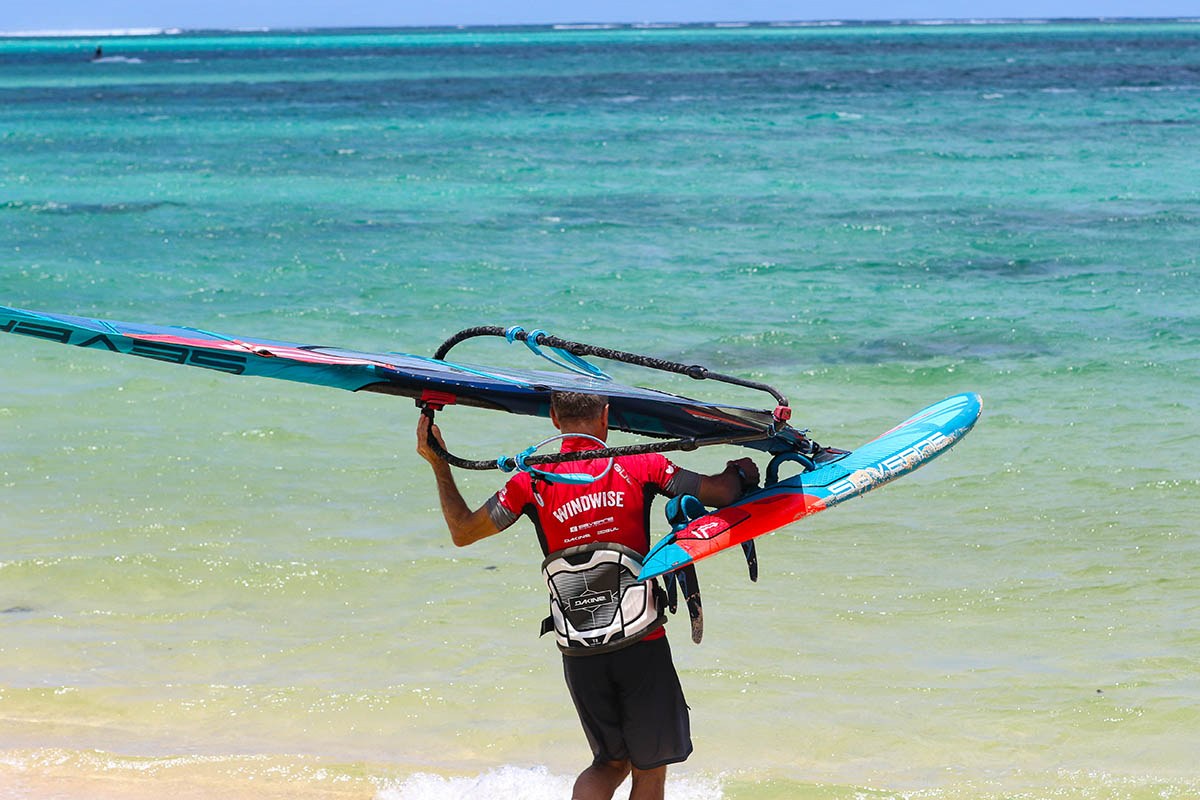
How To Fine Tune Your Sailing And Your Dyno!
Okay, so we’ve gone through the footstrap set up, positioning and fit so you’re comfortable for all conditions and any style of windsurfing. We’ll now focus on your mast base positioning and fin set up choice to enable you to get the most out of the Dyno! We’ve tried to make it simple and easy to understand so you can get it right for your level and aspirations. All you need to do is follow the system! So here goes….
Mast Base Positioning
You’ll notice the Dyno has a small range in its mast track, this tells you we’ve tested the board to help you get the best possible set up. For your initial session, and to be honest, most of the time, set the mast base ‘in the centre’ of the mast track. This will suit a very wide range of conditions, sailor weights, sailor size, and levels. To fine tune for each individual on water session, follow our Windwise tuning system.
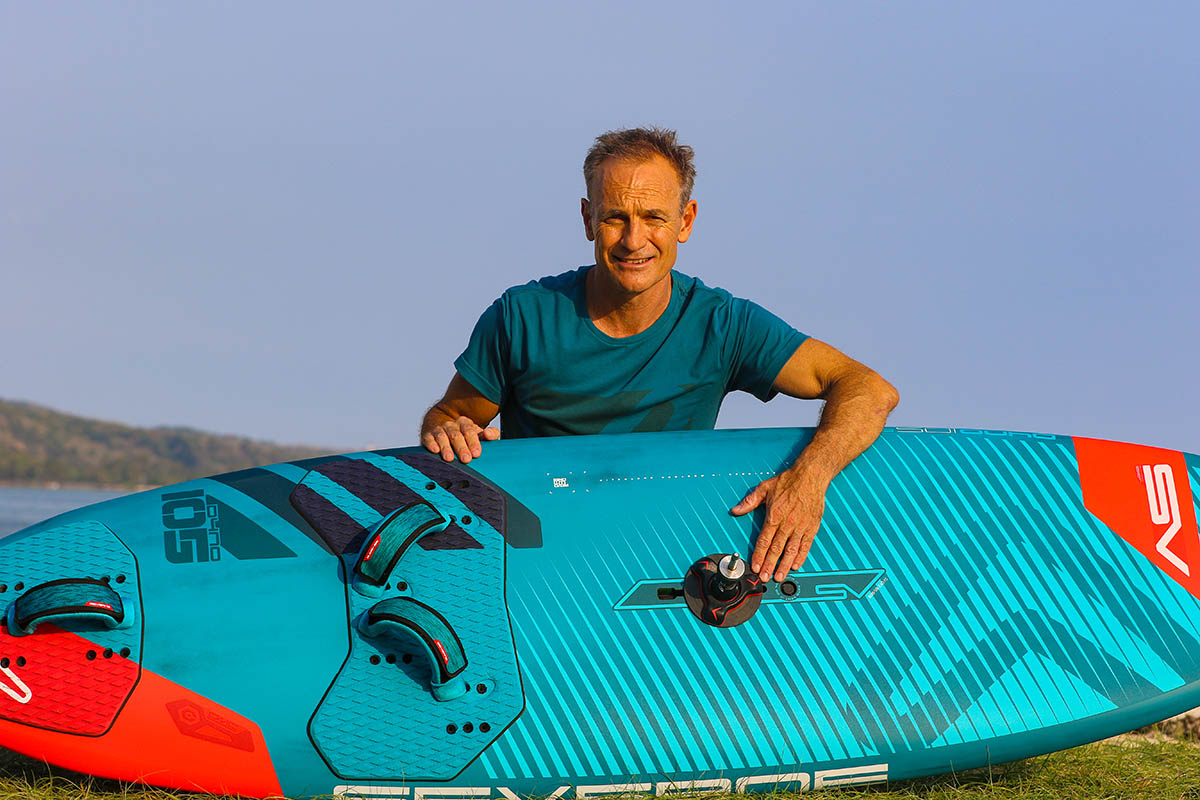
WiseWords
The distance between the mast base and the fin(s) effects the overall pitch and manoeuvrability of the board.
- A forward mast base makes any board feel more directional, locked in and ride flatter.
- A rearward mast base makes any board feel more manoeuvrable, pivotal and lift more.
To get a better sense of this and fine tune your board, try moving the base forward or back by 1-3-5cm’s using the following details to make it work for your sail size, water state and whatever you’re trying to master.
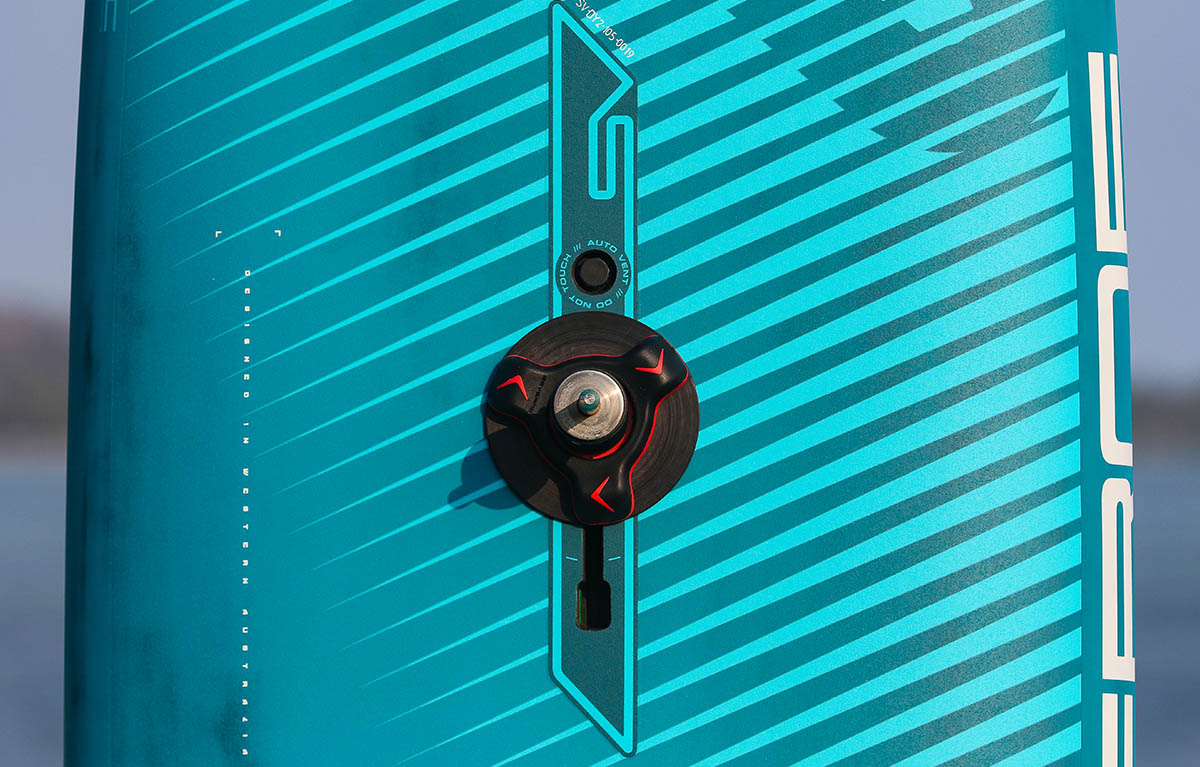
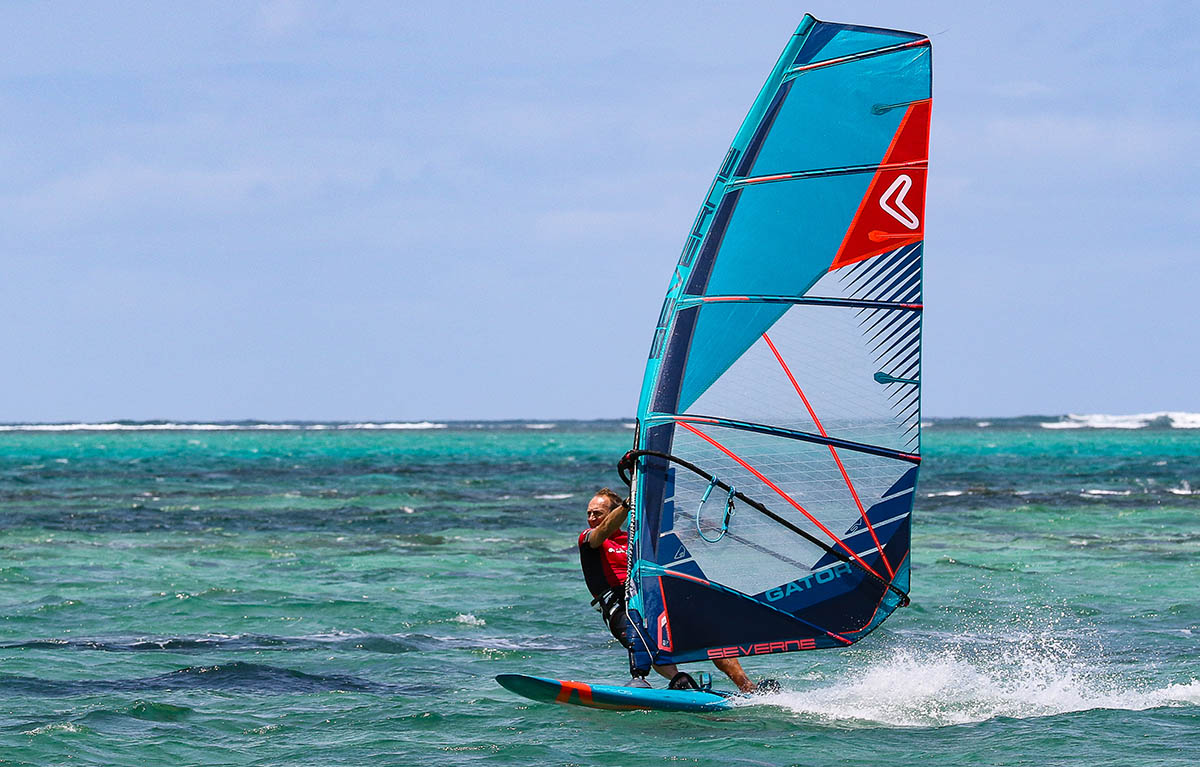
Try moving the mast base forward…
- If the wind is lighter, you’re trying to plane early or keep upwind.
- If the nose is lifting too much over chop or you’re well over powered.
- You’re on a smaller board for the first time and want extra stability.
- You’re on a larger sail and want that locked in directional feel.
- If the tail seems to be sinking more than you’d wish.
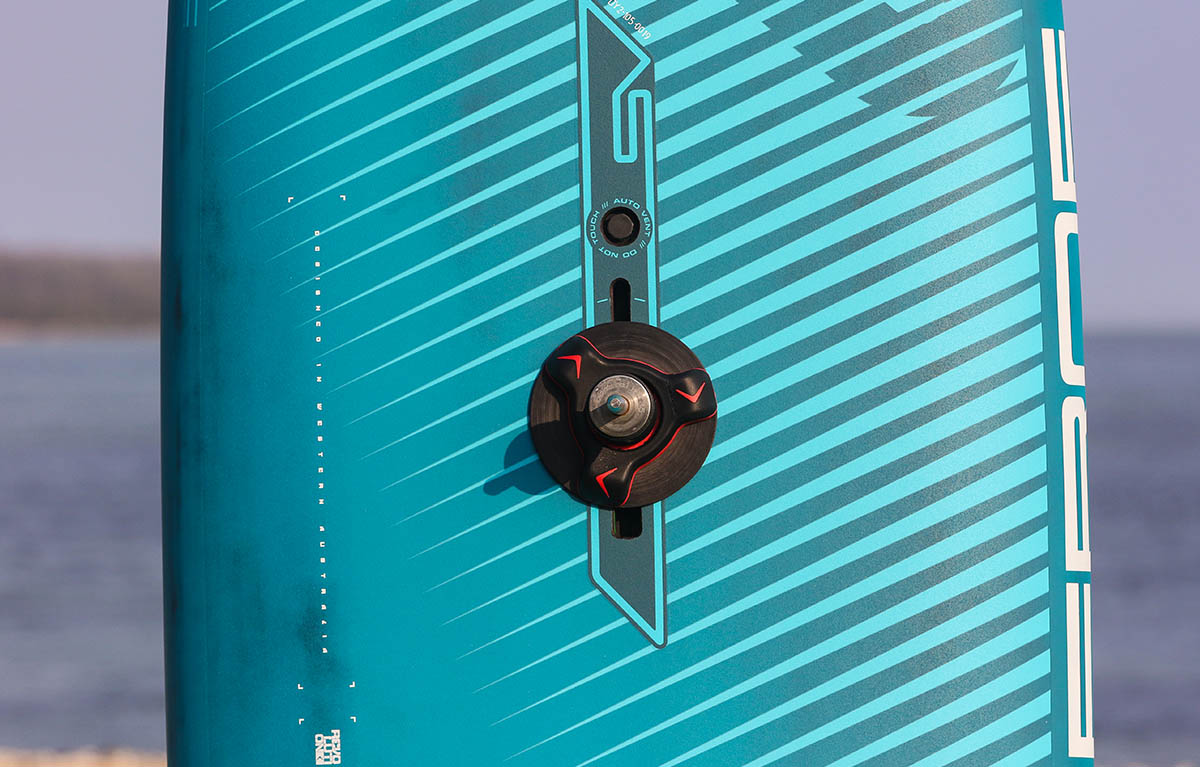
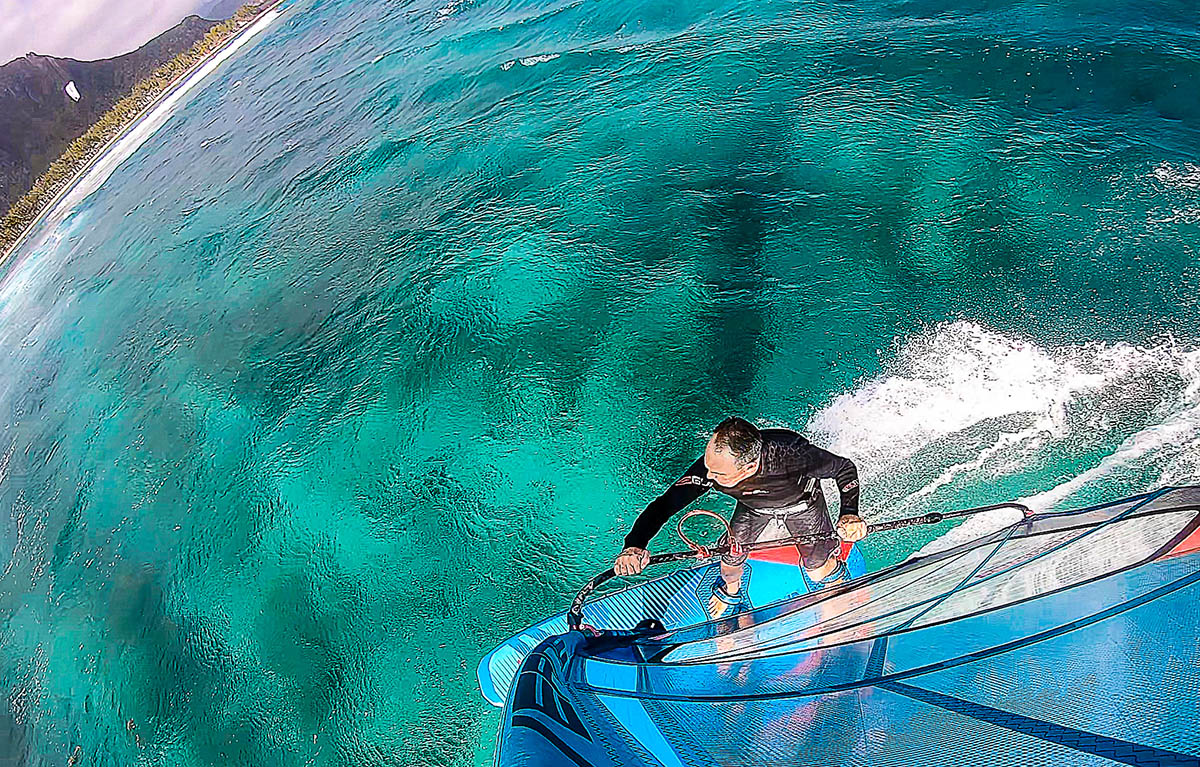
Try moving the mast base back…
- If the nose is ‘catching’ at speed over chop or punching through white water.
- You want tighter turns, snappier gybes and more manoeuvrability.
- You want greater nose clearance punching out over waves or dropping down swell.
- You’re looking for tighter top turns on a wave or trying ‘pivotal’ freestyle moves.
FIN SELECTION “Single Fin v Thruster Set Up”
Here’s when and why you should change your fin set up.
As you’ll see, the Dyno can be used with either single fin or tri fin ‘Thruster’ set ups. Whilst there’s some crossover between the two modes, switching between the two set ups will instantly change the character and feel of the board, especially if you combine it with moving the footstraps (see our previous footstrap feature). It’s a real chameleon!
Here’s how to make the right choice for you and your board.
SingLe Fin Set Up
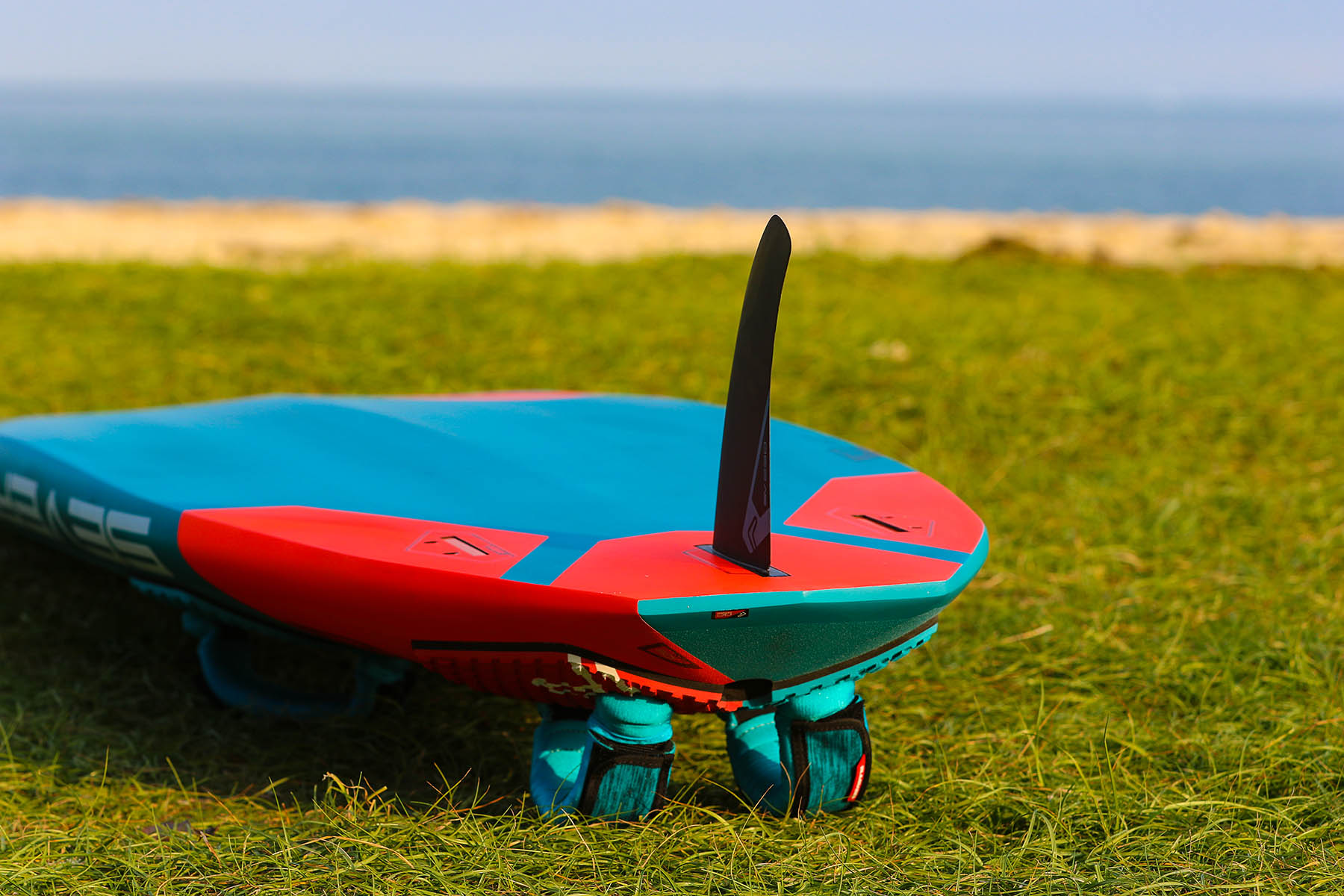
Q.When should I use single fin?
A. If you’re on flatter water, looking for top speed, rapid acceleration and that directional locked in feel, then go for a single fin. You can load it up, drive off the fin and really make the Dyno fly!
If you’re in a bump and jump environment, but like or want a faster more directional feel, you can still also use the Dyno in single fin option. Either way, it’s quick and easy to put in the two Slot Box fillers and pop in your single fin.
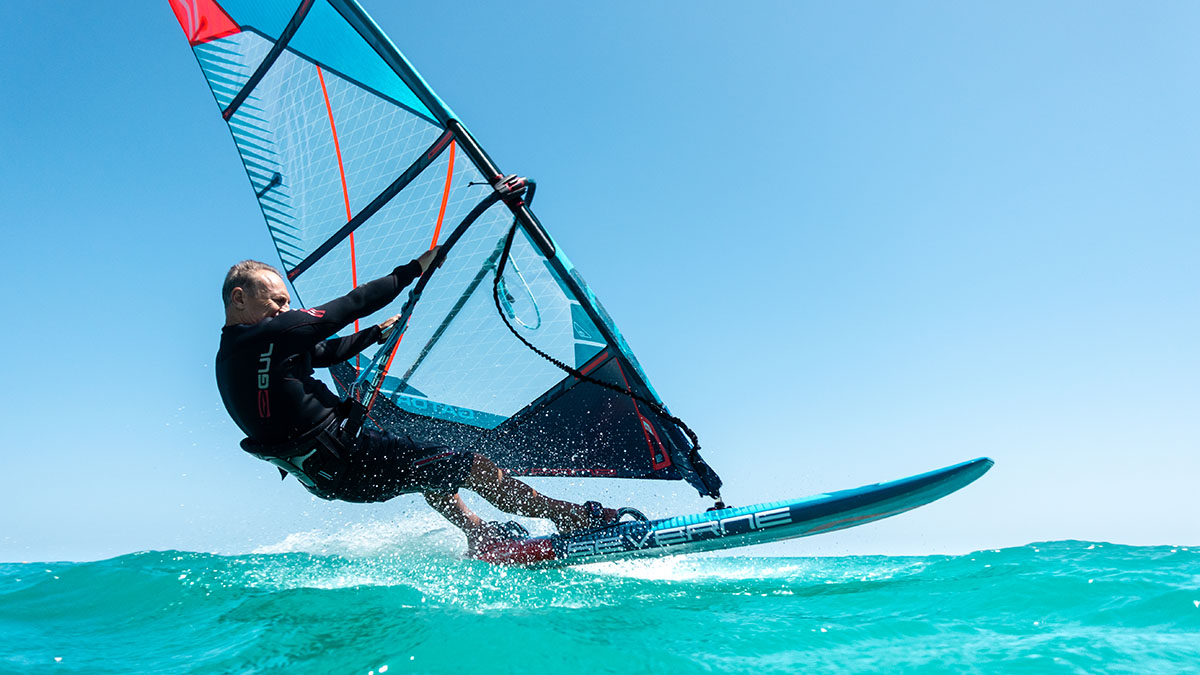
Single Fin Advantages
- Quicker earlier planing.
- Faster top-end blasting speed.
- Ability to hold down a larger sail when powered up.
- Makes the board more directional and locked in.
Wise Words
Flat Water Single Fin Set Up = I’d suggest outboard front straps and double back straps.
Bump ‘n’ Jump Single Fin Set Up = I’d suggest inboard front straps and single back strap.
Tri Fin Thruster Set Up
We’ve provided the right sized Tri fins for each size of Dyno to handle the widest range of conditions and sail size. A Tri fin set up is less critical and more forgiving than a single fin, so you can use them with a wide range of sails. (If you want to change Thruster fin sizes, use the same on water tuning advice as a single fin (see end of feature).
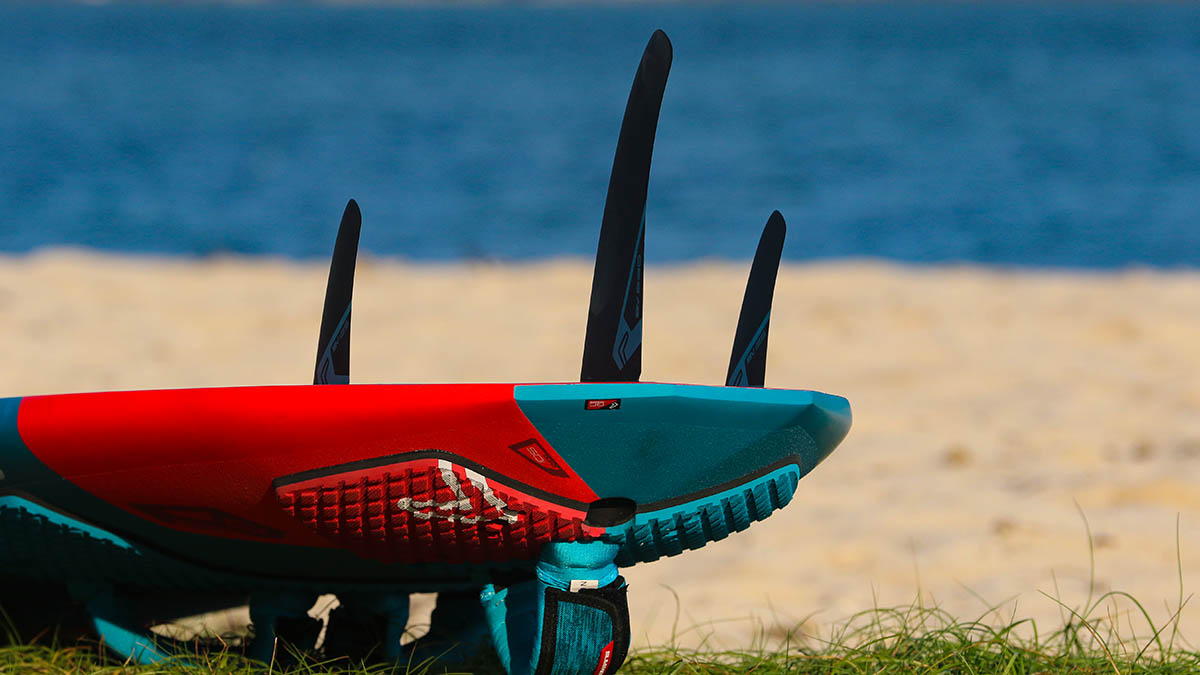
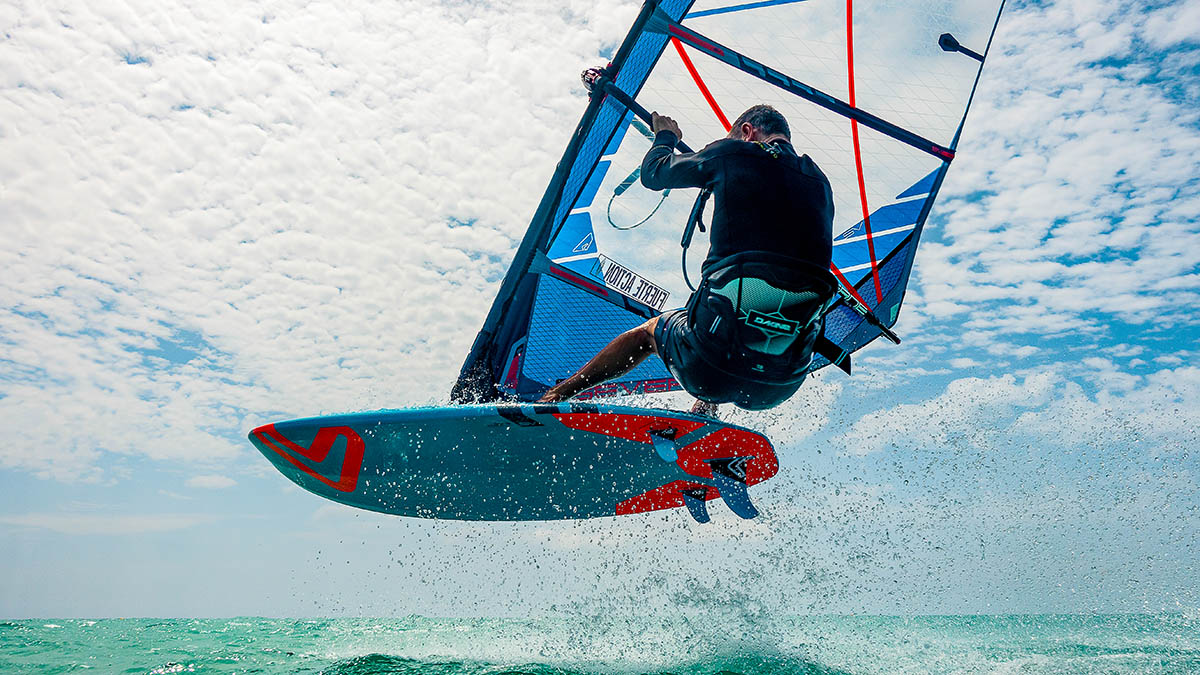
Q. When should I use the Tri Fin ‘Thruster’ set up?
A. When speed is less of a priority and it’s all about manoeuvrability, gybes or ‘grip’ in waves, go for the thruster set up. This helps hold the rail in, allowing you to carve the turns with confidence and control. Initially, you might need to be lighter on the rear leg, but the thruster set up does wonders for your sailing, turning and most importantly enjoyment of the Dyno in more challenging water states – ENJOY!
- Extra stability and control in rougher conditions.
- Takes the top end speed off for more control.
- Increased grip turning, gybing and wave sailing.
- Better for shallower water situations.
Q. How do I know if my single fin is too big or too small?
It’s very common to ask ‘What size of fin should I go for’. But this depends on sailor weight, sail size, water state and wind strength. So you need to learn to fin tune and experiment. The good news is that the Dyno, with it’s deep ‘vee’ and super easy rail outline, means it’s very forgiving on the fin(s), so you’ll get a great range out of them. But here’s how to ‘fin’ tune if you really want to experiment.
Here’s what you might feel on the water if….
- If your fin(s) are too small: You could struggle to get planing, stay upwind and often spin out.
- If your fin(s) is too large: You might constantly head upwind, find the board keeps lifting out of the water at speed and it becomes very hard to control.
Increase fin size for:
More superior stature sailors / Bigger sails / Less powered up situations / Over coming excessive spin out / combating strong currents or tides / better upwind performance.
Decrease fin size for:
Smaller sailors / smaller sails / Being more powered up / Looking for more slip, slide and a ‘looser’ feeling in waves if you have ambitions to take on Philip Koster!
Next time, we’ll look at how to get more out of your windsurfing technique and the Dyno on the water!
We’ve just announced our Windwise Tour for 2020, so if you want to maximize your level, get the most out of your time on the water and try some Severne kit join us on our tour www.windwise.net. Also, if you want some personal advice on your Dyno and how to improve your sailing, then ask Simon Bornhoft info@windwise.net.
If you’ve missed out on our previous parts of the Dyno board setup guides, then follow the links below:
